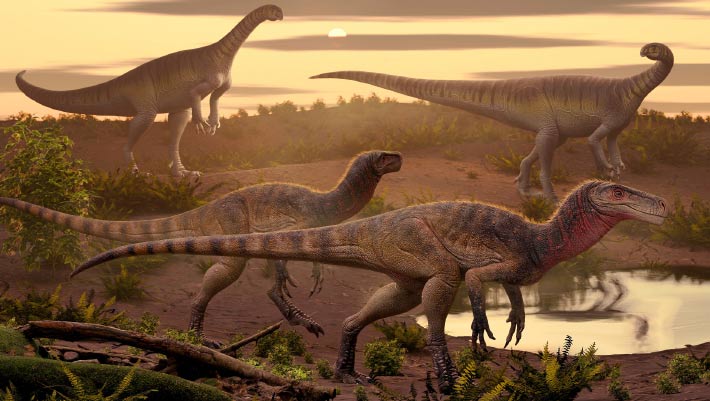Now Reading: New Herrerasaurian Dinosaur Species Discovered in India
-
01
New Herrerasaurian Dinosaur Species Discovered in India
New Herrerasaurian Dinosaur Species Discovered in India

Fast Summary:
- New Dinosaur Revelation: Maleriraptor kuttyi, a herrerasaur species, has been identified from fossils found in the Upper Maleri Formation, Pranhita-Godavari Valley, India.
- Time Period: The species lived during the early Norian age of the Triassic period (approximately 220 million years ago).
- Scientific Context: Herrerasaurs were among the earliest predatory dinosaurs and have primarily been documented in South America. This discovery represents their presence in Gondwana during this era.
- Evolutionary Meaning: The fossil suggests herrerasaurs survived post-extinction events that wiped out herbivorous reptiles like rhynchosaurs. It helps fill evolutionary gaps between South American and North American herrerasaur records.
- climatic Connection: Researchers propose similar paleoclimates between India and southern North America may explain shared faunal traits absent or rare in South America.
Indian Opinion analysis:
The discovery of Maleriraptor kuttyi sheds light on India’s critical role in understanding early dinosaur evolution during the Triassic period. These findings underscore India’s geological significance as part of Gondwana, offering new perspectives on dinosaur dispersal patterns across continents.By filling temporal gaps between major regions-South America and North America-scientists gain insights into how climate-driven ecological factors influenced survival trends among prehistoric fauna.For India, such discoveries enhance its reputation as a hotspot for paleontological research while contributing to broader scientific narratives about our planet’s ancient biodiversity transitions. Continued exploration within formations like Upper Maleri might reveal further links to global evolutionary histories dating back millions of years.Read More























